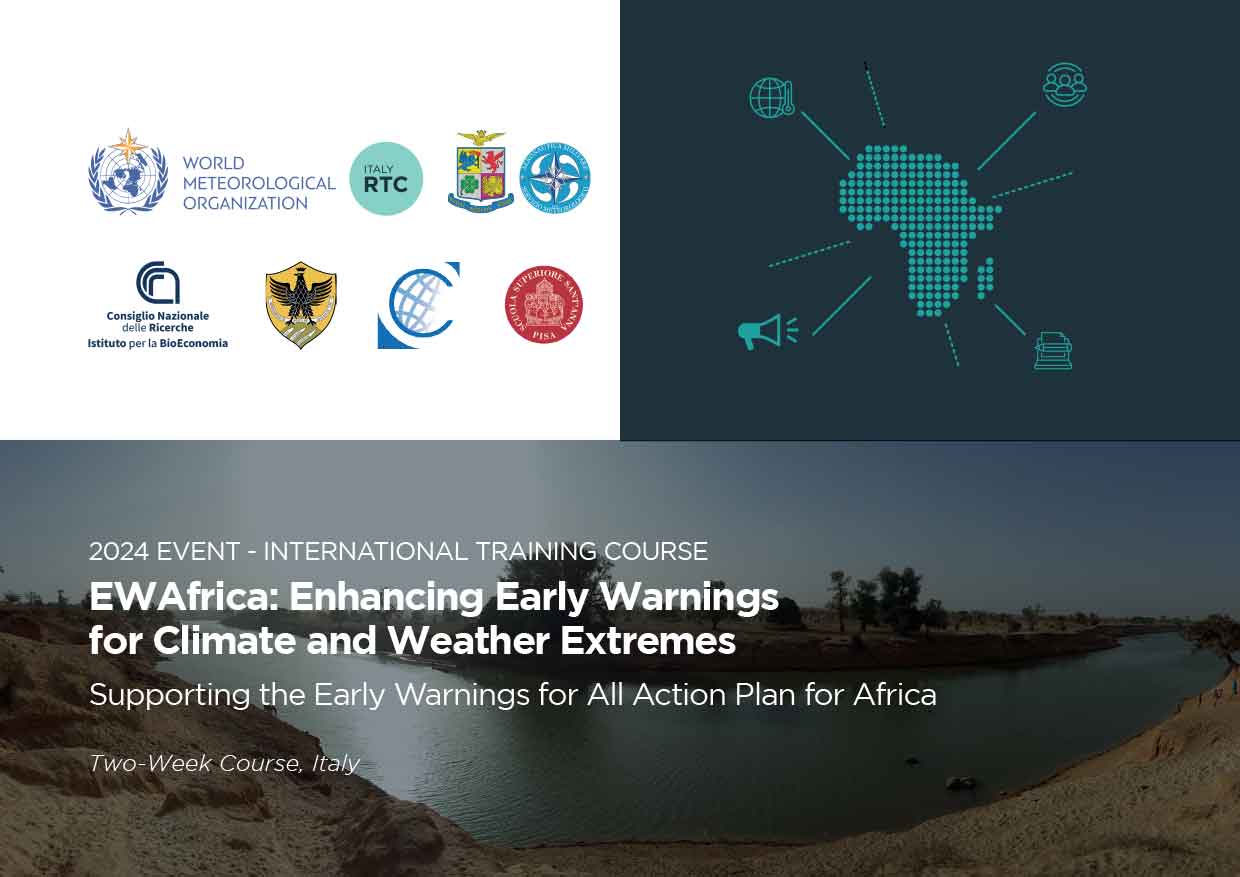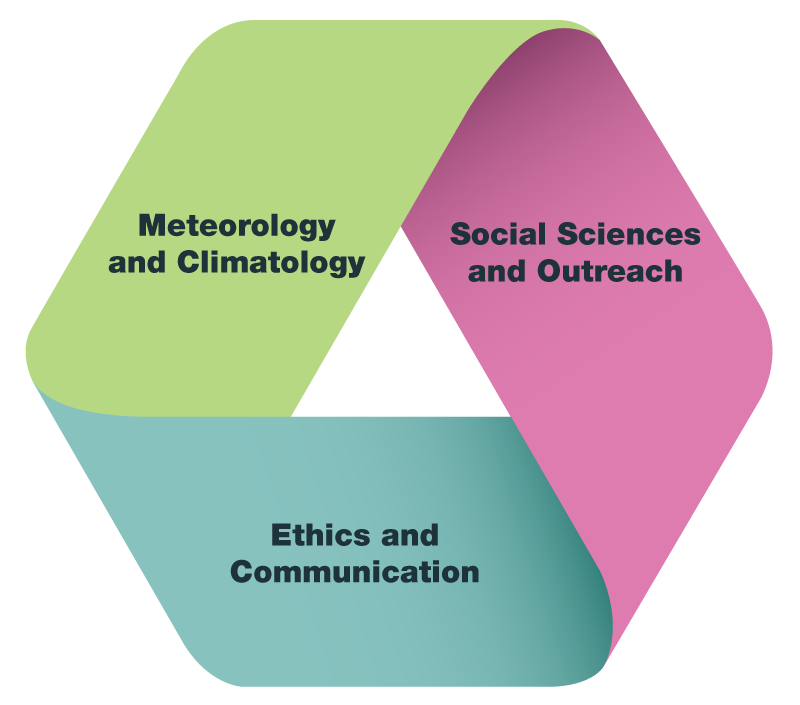2024 UPCOMING EVENT - INTERNATIONAL TRAINING COURSE
EWAfrica: Enhancing Early Warnings
for Climate and Weather Extremes
Supporting the Early Warnings for All Action Plan for Africa

The Context
Africa grapples with severe climate challenges—floods, droughts, cyclones, storms, and heatwaves—impeding socio-economic progress. From 1970 to 2021, Africa accounted for 35% of global weather-related fatalities, yet only 40% had access to Early Warning Systems (EWS), a global low.
The World Meteorological Organization’s 2022 report highlights socio-economic impacts, emphasizing the urgent need for effective early warning systems. These systems yield a 30% damage reduction with just 24 hours’ notice.
The Early Warnings for All Action Plan for Africa, part of the Early Warning for All Initiative, unveiled in Nairobi on September 4, 2023, aims to safeguard lives and livelihoods. Focused on monitoring, capacity building, communication, and community engagement, it enhances dis- aster preparedness, increases awareness, and fosters regional cooperation.
About EWAfrica
An International Training Initiative to Support the Early Warnings for All Action Plan for Africa
Strengthen knowledge and technical expertise to establish Multi-Hazard Early Warning Systems (MHEWS) in participants’ respective countries and regions, addressing local needs within a robust global scientific framework.
EWAfrica training course caters to the learning needs of National Meteorological and Hydrological Services (NMHS) and Disaster Risk Management (DRM) agencies, focusing on co-designing multi-hazard, people-centered, and impact-based EWS in Africa. Each course pillar addresses specific learning topics that promote collaboration, partnership, inclusion, interoperability, and transdisciplinary approaches.
Goal
Strengthen knowledge and technical expertise to establish Multi-Hazard Early Warning Systems (MHEWS) in participants’ respective countries and regions, addressing local needs within a robust global scientific framework.
EWAfrica training course caters to the learning needs of National Meteorological and Hydrological Services (NMHS) and Disaster Risk Management (DRM) agencies, focusing on co-designing multi-hazard, people-centered, and impact-based Early Warning Systems (EWS) in Africa. Each course pillar addresses specific learning topics that promote collaboration, partnership, inclusion, interoperability, and transdisciplinary approaches.
Aim
Target Audience
The course is designed for agents of NMHS in Africa, as well as other line ministries involved in weather and climate-related risks, and Disaster Risk Management agencies with responsibility or engagement in designing and/or developing EWS.
Fees
Express your interest in the Course now!



WHAT ARE THE REASONS TO ATTEND THIS COURSE?
Participants will improve their knowledge and technical capabilities in the design and set-up of MHEWS in their own countries and regions, responding to local needs within a global and robust scientific framework.
The training course will provide participants with knowledge through best practices and key studies on methods, approaches and ethical implications to respond to some of the main challenges in implementing MHEWS.
Key Topics
Principles of Multi-Hazard EWS
Key components of global risk reduction, EWS face implementation challenges. A robust legislative framework is vital, establishing rules for roles, responsibilities, and processes. This ensures alignment with national disaster risk management strategies and upholds human rights. Emphasizing a people-centered, impact-based approach, the principles include partnership, monitoring, evaluation, and ethical considerations for just and equitable MHEWS development and implementation.
Disaster Risk Knowledge and Management
Multi-risk assessment, encompassing social, environmental, economic, political, and ethical aspects of vulnerability to various climatic hazards.
Preparedness and Response Capabilities
Inclusive contingency planning, training, and awareness-raising among local communities, including the integration of indigenous knowledge. This aims to enhance community involvement in early warning systems, focusing on response capability and equality.
Observations, Monitoring, and Forecasting
Monitoring and forecasting multiple hazards, whether occurring simultaneously or cumulatively over time, across various spatial scales (from regional to local, transboundary) and temporal scales (seamless from nowcasting to seasonal). This involves utilizing open standards and platforms for data and information sharing, ensuring interoperability and employing distributed systems to enhance the monitoring and forecasting capacities of climate and weather-related parameters.
Dissemination and Communication
Inclusive communication campaigns, emphasizing the ethics of warning communication (non-exclusivity, inclusion of disadvantaged groups, etc.). This involves integrating digital technology and traditional social networks, along with collaboratively defining comprehensible warning messages with communities. The goal is to enhance the establishment of robust and diversified communication strategies for disseminating early warnings to all.
Why should institutions send their staff members?
Course Format, Assessment and Activities
Course Format
Training course in presence with lectures, case studies and Labs (hands on sessions. Distance Learning will be used for pre-course and post-course activities.
Student Assessment
Language Used
Pre-course Content and Activities
Post-course Content and Activities
Organizers



